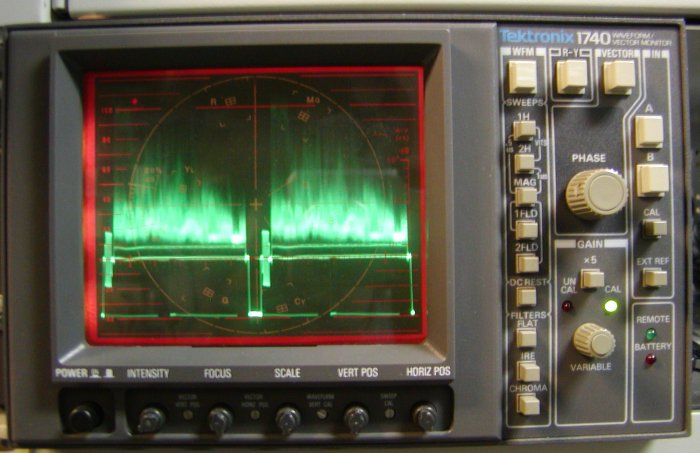|
Line Monitor
|

This unit monitors the chrominance and luminance levels of the composite signal. The current view is 2H. This is monitoring two horizontal lines side by side. It is taking a average of all the display lines that make up a field. The scale is IRE. The scale is - 40 to 120 IRE. There is about 30 frames per second in a broadcast television signal. Each frame has 525 horizontal lines. A frame is divided into two fields that has 262 1/2 horizontal lines. Field 1 shows lines 1, 3, 5, 7, etc, while field 2 shows the even numbered lines. This is called interlacing. This happens so fast that the eye cannot detect it on a 35 inch TV or smaller. Out of the 525 lines only 482 1/2 of them are displayed on the screen. The other 42 lines are not displayed because the electron beam inside the TV is turned off at this time for it travels from the bottom of the screen to the top. It does this rather quickly, about 1/1000 of a second. This is fast but it would be seen traveling from the bottom to the top like a flash between every field. So the electron beam is blanked out of the picture. This time is called the vertical blanking interval (VBI.) Each field has 21 horizontal lines in the VBI that are not displayed. With modern electronics that respond extremely fast, data is encoded into those lines in the VBI. For instance on line 21, closed caption characters are encoded into digital information and inserted into line 21. Other lines have various uses. Some lines have stock quotes or silent radio. Some lines have test signals.
Line Monitor / vector scope is a specialized oscilloscope to monitor chrominance and luminance levels. FCC regulations require these levels for broadcast to be below 120 IRE. The luminance is the brightness the picture and the chroma is the color component. Test signals such as color bars are used to set the levels for broadcast. The vector scope displays the color vectors based on the color burst frequency of 3.579545 MHz. To view the correct color, the color vectors have to be at the correct phase angle with corresponding amplitude.
IRE International Radio Engineers. This is used for a voltage
level to monitor the composite video signal levels.